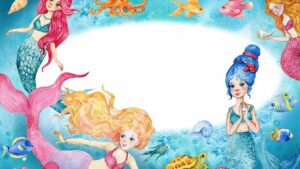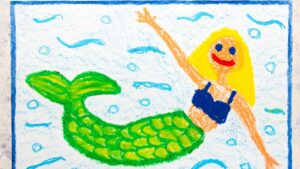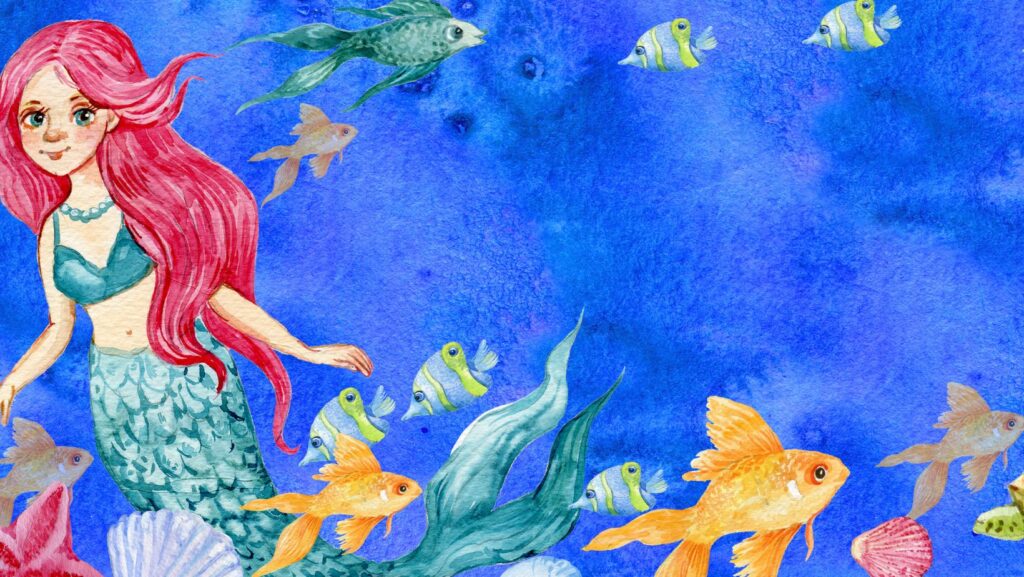Drawing mermaids captivates artists and enthusiasts alike, offering a blend of fantasy and creativity. These mythical sea creatures, with their enchanting tails and flowing hair, have inspired countless works of art across cultures. For those eager to dive into the world of mermaid illustration, understanding the basics of anatomy and design is key.
Incorporating elements of the ocean, like coral reefs or underwater landscapes, enhances the allure of mermaid drawings. By mastering techniques such as shading and perspective, artists can bring these mythical beings to life, inviting viewers into a world where fantasy meets reality. Whether a seasoned artist or a beginner, drawing mermaids offers endless possibilities for future digital art.
Drawing:mi3eryqlt6g= Mermaid

Mermaid art has fascinated artists for centuries, with its origins tracing back to ancient mythologies. In Babylonian culture, the deity Oannes had a fish-like form, reflecting early inspirations for these mythical figures. By the Renaissance, mermaid imagery became more prominent, especially in European art. Artists incorporated mermaids in paintings, tapestries, and sculptures, embedding them in folklore and symbolizing both allure and danger.
During the 19th century, the Romantic movement spurred a renewed interest in mythical themes, including mermaid art. Notable works like John William Waterhouse’s “A Mermaid” highlighted the enchanting allure of these creatures. Into the 20th century, mermaids gained prominence in modern and contemporary art, influencing various media and pop culture.
Today, mermaid art continues to thrive, inspiring both traditional and digital artists. It embodies a blend of fantasy and natural elements, attracting those captivated by the ocean’s mysteries. The enduring appeal of mermaid art lies in its ability to evoke imagination and wonder, maintaining its relevance and popularity in creative expressions.
Essential Drawing Materials

Creating a drawing:mi3eryqlt6g= mermaid starts with selecting the right materials. Pencils are fundamental for sketching outlines and adding intricate details. Artists often choose graphite pencils for their varying hardness levels. High-quality paper is crucial to ensure that drawings have a smooth surface. Acid-free paper prevents yellowing over time, preserving mermaid artwork. Fine-line pens are ideal for inking outlines, providing cleaner edges. For those adding color, colored pencils or markers introduce vibrancy. Watercolor paints allow for blending, creating a fluid look reminiscent of ocean waves. Erasers are essential for correcting mistakes and refining details in mermaid drawings. Kneaded erasers work well for lifting graphite without damaging the paper. Sharpeners keep pencils ready for precise work.
Step-By-Step Guide To drawing:mi3eryqlt6g= mermaid

Drawing a mermaid involves several steps to capture their captivating essence. Start by sketching the mermaid’s basic shapes using light strokes. Begin with an oval for the head and a fluid line for the spine, defining the torso, arms, and tail.
Refine the anatomy by adding features like facial elements and fins. Ensure the tail flows gracefully, accentuating the mermaid’s mythical nature. Consider different positions for the arms to give a sense of movement and elegance.
Focus on details to enhance the mermaid drawing. Add scales, using gentle curves to mimic the natural textures of underwater creatures. Incorporate ocean elements like seashells and fish, integrating them seamlessly with the mermaid’s form.
Finally, apply shading and color for a dynamic look. Utilize gradients on the tail for depth, ensuring the mermaid drawing captures light and shadow effectively. Use colors that complement the marine theme and bring the mermaid to life.
Popular Styles And Techniques
Drawing mermaids offers a unique opportunity to blend fantasy with artistic skill, inviting artists to explore various styles and techniques. From capturing the whimsical charm of cartoon-like mermaids to the intricate details of realistic portrayals, there’s a style to suit every artist’s preference. Techniques such as shading and perspective play a crucial role in adding depth and movement to the illustrations, making them more lifelike and engaging.
Incorporating ocean elements like coral reefs and sea creatures can further enrich the artwork, creating a vibrant underwater scene. By experimenting with different materials and approaches, artists can discover new ways to express their creativity, ensuring that each mermaid illustration is as unique as the artist behind it. Whether they’re seasoned professionals or enthusiastic beginners, those who dive into the world of mermaid art will find endless inspiration and opportunities to refine their craft.



